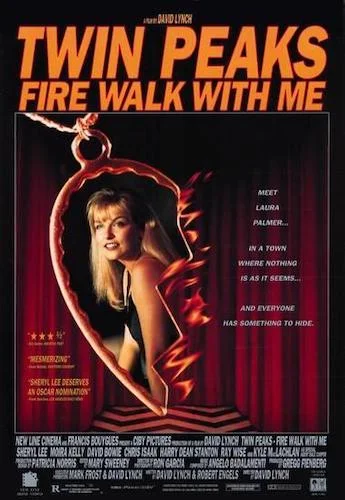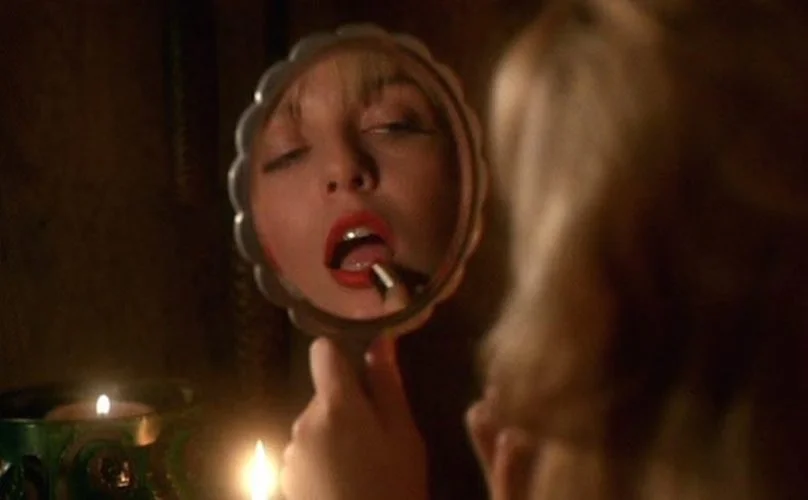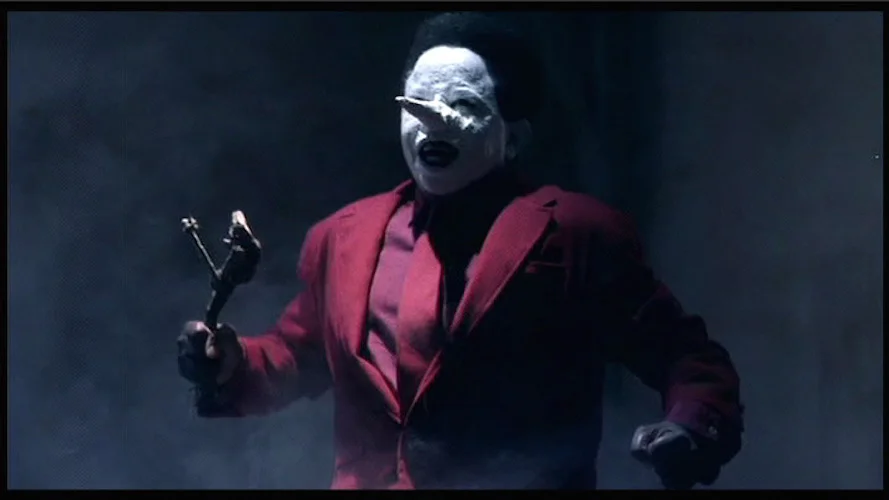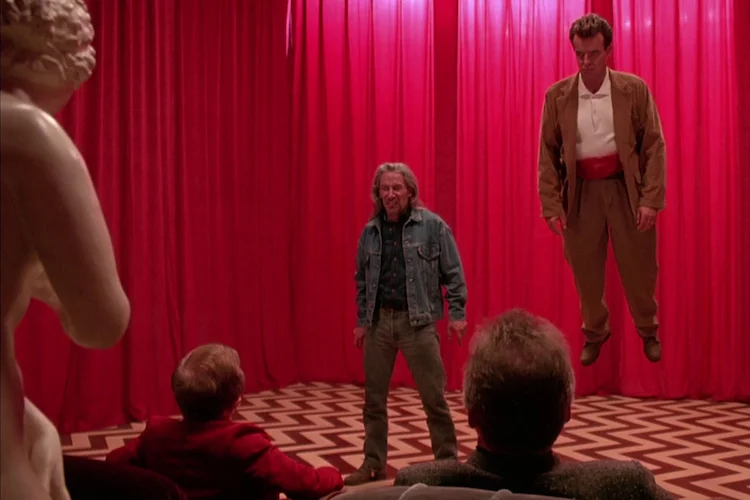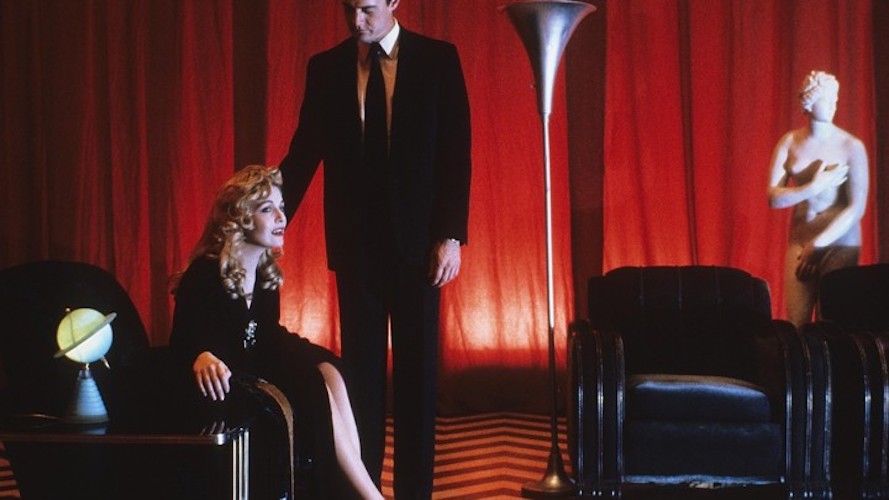Twin Peaks Week: Fire Walk With Me
Every Thursday, an older film released on this opening weekend years ago will be reviewed. As an exception for Twin Peaks Week, we will still review an older film, but not one released on this date previously. As a part of Twin Peaks Week, we are going to look at the continuation film Twin Peaks: Fire Walk With Me.
It goes without saying that Twin Peaks: Fire Walks With Me only works at its fullest potential if you are a fan of the show altogether. On its very own, this film is a challenge to understand the suffering of an exploited, tortured woman within a patronizing and dominating society. As this is through David Lynch’s lens, the extremes go a little overboard. The sympathy comes from the anguish Laura Palmer experiences, more than the times we can even appreciate her as a human being. All of the connections and expansions on the show’s other themes (police procedurals, dimension hopping) won’t make a lick of sense if you aren’t familiar with the series. This isn’t in the typical David Lynch way, like Eraserhead or Inland Empire, where you are to come up with your own conclusions about what is being offered. This is an actual series of missing pieces to a gigantic puzzle. You have to watch the series.
Speaking of pieces, there are actual deleted scenes included with specific DVD sets of Fire Walks With Me titled The Missing Pieces. The deleted scenes are so numerous, they create their own feature film (disjointed, of course). The idea here is that Lynch originally wanted to have a series of Twin Peaks related films to wrap up the show’s cancellation in a different, complete way. Since Fire Walk With Me was brutally panned and a box office car crash, these other films never came to fruition. These many segments were left untethered, but Lynch wanted to showcase as much of the story as possible since the dream was dead and gone (at the time). These missing scenes, once again, benefit Twin Peaks obsessives, but not those blindly witnessing this film by itself. Not one iota.
The majority of the film is anchored around the final days of Laura Palmer’s life.
The entire purpose of this particular film (which, again, was meant to be one chapter of a handful) is to provide context to the final days in Laura Palmer’s life. No flashbacks from other people. No Black Lodge representation. No near-identical relatives. The real Laura Palmer, as she lived her final breaths, plays into many of the show’s themes of suffering at the hands of an imperfect society, while everyone else turned a blind eye or was unaware (this all happened underneath the town’s cheerful illusion). We do get some detailing of Special Agent Dale Cooper and his bureau, specifically the “blue rose” cases. We briefly meet Phillip Jeffries, and we get sent to arguably the most unsettling image in Lynchian history: a series of beings manically losing their marbles in the Black Lodge, while Jeffries screams in agony. The Black Lodge is a confirmed hell, and Jeffries understands that no one will understand Judy (an undescribed force that gets touched upon in full in The Return).
One of the lovely faces in Phillip Jeffries’ vision.
We start to learn that Twin Peaks isn’t necessarily contained by time once we reach The Return, and with that I believe that Fire Walk With Me is more of a sequel than a prequel. Sure, the majority of events that occur here happen before the series takes place. Nothing here is an explicit flashback from a particular person, either. However, Fire Walk With Me feels like a gestating existence within the Black Lodge, as is proven by the visits to said destination. This is an internal damnation for the murdered, the murderer, and the townspeople that witnessed the pre-decay of Palmer before her actual demise. This isn’t about Laura being killed by her dad, but by all of Twin Peaks in a very slow, masochistic way; through perversions, addictions, selfishness, and expectations.
Leland and Bob in the Black Lodge.
Fire Walk With Me needed context and time to figure out. With the very littlest of exposure, it is a lengthy torture fest strewn together by non sequiturs. At the time of release for Twin Peaks fans, it was a let down that only provided some visual context to the events people already knew about (plus, the additional open ended nature just made it matter all the less). Many years later, Fire Walk With Me is not so much a story as it is a mindset. Of course reevaluation can take place. The entire series was being figured out again and again after all of this time. The cult fanbases weren’t going to disappear overnight. That’s when Fire Walk With Me began to truly mean something. It became a joint experience for many of us. It was that house on fire that none of us could look away from. We are the towns people of Twin Peaks. We’re guilty for standing by the lengthy demise of the homecoming queen and heart of the town.
Laura Palmer and Dale Cooper in the Black Lodge.
The film allows Sheryl Lee to showcase her acting abilities here, and does she ever. Her painful screams and dead eyes are the subjects of our nightmares, and she is a horror film personified. It all feels so real, though. Her anguish is the sense being made of all of this journey, and that’s the most terrifying part. She is our go-to for the real, and she endures the worst pains a middle class teenager could muster. Abuse. Sexual assault. Forced addictions. Mistrusts. Murder. We know who killed Laura Palmer after season two, but we truly see how a beautiful town can be so ugly through Fire Walk With Me (we realize the show only really gave us a glimpse of this).
For the series, Fire Walk With Me is essential. In fact, The Missing Pieces are also a must-see (despite making much less narrative sense as a stand-alone; this entire journey is context-over-independency). For the uninformed, this film may just be an endurance test. For the many-levels of the Twin Peaks lore, this is an artifact. The Return won’t come together without it. The Mark Frost books rely on it, too. Most of its faults are because there was a bigger picture that was once again shut down. Now that we have it, we can revisit it, understand it, and empathize with it. This is a tainted eulogy, and a harbinger of agony. If the town destroyed its purest core, what the hell will it be like in the twenty five year wait? We will have to see.
Andreas Babiolakis has a Masters degree in Film and Photography Preservation and Collections management from Ryerson University, as well as a Bachelors degree in Cinema Studies from York University. His favourite times of year are the Criterion Collection flash sales and the annual Toronto International Film Festival.


